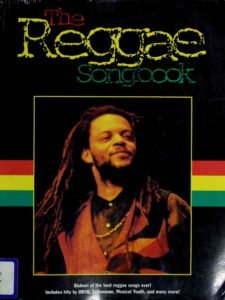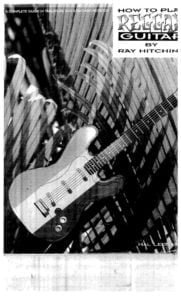Table of Contents:
Reggae: July 1st, International Reggae Day
International Reggae Day, celebrated on July 1 each year, is a global celebration of the gift that Jamaica has given to the world: reggae music. This event combines the power of music, media and technology in a global invitation to celebrate Jamaican creativity and showcase the many dimensions of the reggae lifestyle around the world.

Andrea Davis, a Jamaican who was instrumental in the establishment of the first International Reggae Day and organizer of the annual event since the first edition in 1994, shares with us her views on the importance of reggae music and the challenges it faces today in Jamaica’s creative sector.
Best Sheet Music download from our Library.
Reggae Day was inspired by the speech Winnie Mandela gave during her visit to Kingston in 1992, in which she praised the ability of reggae music to “encourage, inspire and unite” the people of South Africa in their fight against terrorism and apartheid.
When International Reggae Day was first celebrated on July 1, 1994, the idea was to mobilize Jamaican radio stations to showcase the roots and ramifications of Jamaican music; promote quality standards in music and media; create the Jamaican Music Hall of Fame; showcasing the best of Jamaica; and help the Jamaican people win in their own fight for social equality.
With the advent of the Internet in 1996, we renamed the event International Reggae (TM) and set ourselves more ambitious goals: to “unite, inspire and encourage” the global reggae community through the power of music, media and technology; showcase the city of Kingston as the birthplace of Jamaican music; highlight the influence of Jamaica, reggae and the Rastafarian religion on global pop culture; and promote support for music and arts education in Jamaica.

What are the origins of reggae music?
Jamaica is known around the world for the diversity and rhythmic originality of its folk and popular music, particularly the genres of mento, ska, rock steady, reggae (of course), dub and dancehall (see box). Few countries have exerted such a great influence on the global music scene in the last 65 years. The global phenomenon generated by the reggae lifestyle was born in Jamaica, and the true home, from a cultural point of view, of reggae music.
Please, subscribe to our Library. Thank you!
Reggae was nourished by this exceptionally rich musical culture and its growth reflects, in particular, the increasing influence of Rastafarians in urban Jamaica in the 1960s. The country’s musical scene was imbued with the philosophy, percussion and style of Rastafarians, including their dreadlocks, an unmistakable signature of the image that has been associated with reggae music.
The rhythm of reggae, which resembles the beat of the heart, and the lyrics of its songs, which speak of love, redemption and a natural life, continue to captivate audiences around the world. Reggae music, which accentuates the second and fourth beats of each measure, has been the soundtrack of the global “One Love” movement, led by the king of reggae, Bob Marley, and artists such as Jimmy Cliff, Peter Tosh, Dennis Brown and Toots & the Maytals, whose recordings and international tours introduced the world to reggae music, Jamaican culture and “livity”, or Rastafarian vital energy.
Jamaica’s distinctive sounds, clothing, style, dance and language continue to influence global culture, as singers, musicians, visual artists and dancers who serve as ambassadors of the Jamaican sound travel around the world. Planet, spreading the message of “One Love” (love shared by all) through the power of reggae music.
Like other lifestyle genres, including hip hop, country music or jazz, reggae has its own sound, fashion, dance, language, philosophy, cuisine, style and attitude. The philosophical doctrine of love shared by all, inspired by the ideas of the politician Marcus Garvey and popularized by Rastafarians, is the backbone of the global reggae movement. It is something that transcends borders and generations. It could be said that reggae was the first truly global rhythm, since reggae music enjoyed a global audience long before the era of music videos and the Internet began.
The identity and value of the Jamaica brand are intrinsically linked to reggae music and culture. Reggae music is the soundtrack of the island and the signature of the diverse sounds of Jamaica (Sounds of JamaicaTM).
As a key element of Jamaica’s creative industries, which account for 4.8% of GDP, music is one of the country’s most valuable assets. Since the 1960s, Jamaica’s creative entrepreneurs, noted for their innovation and immense capacity for self-improvement, have individually contributed to the country’s export value.
Furthermore, creativity continues to be a powerful driver of inclusion and emancipation of young people and marginalized groups of people in the national economy. The economic, social, cultural and environmental value of Jamaican music has significantly increased the value of the Jamaica brand and continues to make it internationally renowned.
It’s clear that creating a 24-hour, global celebration of reggae with limited financial resources comes with its own challenges. Fortunately, Jamaica has created several different musical genres that have worldwide appeal, but has suffered from a lack of investment in creativity, arguably its most valuable asset and main competitive advantage. One of our objectives in establishing International Reggae Day was to consolidate Jamaica’s position as the true cultural source of the global phenomenon that reggae music has become.
The main challenge to maintaining this vision is the chronic problem of investment deficit in the country’s human and creative capital. The creative sector requires significant venture capital investment, and with such capital in short supply in this country, it is extremely difficult for the sector to thrive. Venture capital funding is a prerequisite for growing Jamaica’s creative economy and developing and commercializing its creative assets.
As in other developing economies, Jamaica must overcome many challenges to strengthen its creative economy. These include lack of access to financial resources, fragmented public and private sectors, gaps in the legal and regulatory framework, a shortage of qualified managers, a business culture characterized by a lack of structures, inadequate education and training opportunities. training and the lack of a strategic approach in the sector.
Too often, decision-makers are overwhelmed by day-to-day social and economic concerns and spend little time on the long-term vision of strengthening Jamaica’s creative economy and creating an enabling environment in which businesses can thrive creative industries in the country.
The competitive advantages inherent in the country’s creative industries, our considerable strengths in hospitality and wellness, our location and our dynamic information and communication technology sector offer a unique opportunity for Jamaica to create wealth in the economy. Knowledge-based, where the country brand enjoys wide recognition and appeal.
The fertile Jamaican musical tradition
Mento was born in the 1940s and mixes acoustic guitar, banjo, hand drums and marimbula. Among the mento legends who recorded songs of this genre, the mother of Jamaican culture, the Honorable Louise Bennett (Miss Lou), Count Lasher, Lord Flea, Lord Fly, Laurel Aitken and Harry Belafonte, a New Yorker of Jamaican origin, stand out. The 1950s hits from Belafonte’s celebrated album, Calypso, the first to sell a million copies, included mento songs like Day-O (The Banana Boat Song) and Jamaica Farewell, first recorded by Miss Lou.
The sound system movement was also born in the 1940s, led by the pioneer “Tom the Great Sebastian” and others, such as Clement Dodd’s “Downbeat,” Duke Reid’s “Trojan,” King’s “The Giant.” Edward and Prince Buster’s “Voice of the People,” whose last recordings (initially made in the United States and then in Jamaica) were played in dance venues across the country.
Sound systems were the main source of entertainment in Jamaica and are an essential part of the Jamaican lifestyle, inside and outside the country. The movement is characterized by a very strong bass base and by materializing in popular pop-up nightclubs, which fueled the expansion of the Jamaican music industry and launched numerous careers to stardom, including that of Jamaica’s first DJ, Count Matchukie.
The most famous sound systems, including the “big three” – Coxsone Dodd’s “Downbeat Sound”, Duke Reid’s “The Trojans” and King Edward’s “The Giant” – became the main producers in the late 1990s. fifties and on major music labels in the late sixties.
This movement had profound repercussions on the development and internationalization of Jamaican music, and played a crucial role in the beginning of the Notting Hill Carnival and in the rise of urban music in the United Kingdom or hip hop in the United States. Today, Jamaican-style sound systems have gained worldwide popularity, from King Jammy to Stone Love, spawning international descendants such as Mighty Crown in Japan, Sentinel Sound in Germany or David Rodigan in the United Kingdom.
Count Matchukie created the art of toasting – a DJ who recites or sings, usually in a monotone, over a rhythm or base – a genre later taken up by artists such as U Roy, Big Youth, Super Cat, Shabba Ranks and Buju Banton. As with the sound system movement, toasting influenced the development of rap and hip hop in the United States.
The ska music of Studio One and the legendary group The Skatalites broke out in the early sixties. Jamaicans fell in love with the infectious sound of wind instruments and the hypnotic dance rhythm. Ska became the country’s soundtrack and quickly gained popularity in the United Kingdom and the United States, thanks to groundbreaking artists such as Desmond Dekker, Prince Buster and Millie Small, whose best-selling hit, “My Boy Lollipop,” launched them to stardom. to Island Records and brought ska to all corners of the planet.
Steady rock, a genre that emphasizes bass lines accompanied by a rhythm guitar played on the last beat of the beat, followed in the footsteps of ska for a brief period of two years towards the end of the 1990s. sixties, producing a flood of singers and bands such as Alton Ellis, Delroy Wilson, John Holt, Ken Boothe, Phyliss Dillion and The Heptones.
Against the backdrop of the political storms of the 1960s, rock steady hits such as No No No, Tide Is High and By The Rivers of Babylon enjoyed a warm reception and created a new group of talent that brought Jamaican music to the mainstream. the pinnacle of the world music scene.
Dub music, predecessor of the remix and recognized as an influence on the subsequent evolution of punk rock, pop, disco, house, techno, trip hop, dub step, drum and bass, dance music and electronic dance music, was born in the seventies thanks to innovative artists such as Lee Scratch Perry, King Tubby and Errol ‘ET’ Thompson.
The musical term reggae first appeared in print in Toots & The Maytals’ 1968 hit Do the Reggae. Like many other African rhythms, reggae is characterized by a strong syncopated rhythm known as the heartbeat, popularized worldwide by the king of reggae, Bob Marley.
In 1973, the film The Harder They Come, starring Jimmy Cliff, introduced Jamaican music to audiences around the world. Today, reggae music is synonymous with equal rights and justice and has earned Jamaica international respect, as well as improving the country’s image. On the other hand, it has had an immense influence on international pop culture.
During the 1980s, dancehall evolved from its original definition (dance hall) to become a genre, thanks to the introduction of King Jammy’s Sleng Ting beat, which had initially been popularized by artist Wayne Smith. Dancehall music dominated the market in the 1980s, as a minimalist approach to the new digital recording process gained traction. Like all Jamaican music genres, dancehall is a lifestyle experience with a diverse cast of talent including, for example, artists such as Beenie Man, Bounti Killa, Lady Saw, Sean Paul and Shaggy, to name just a few ones.
